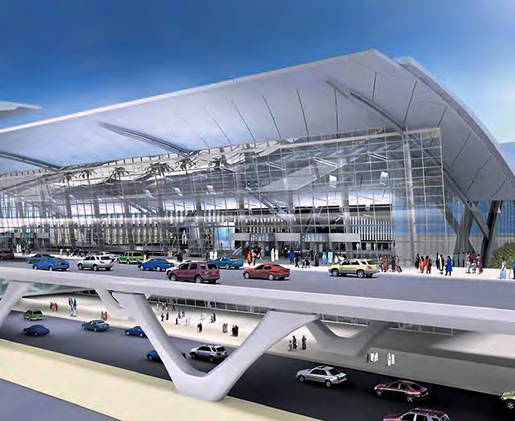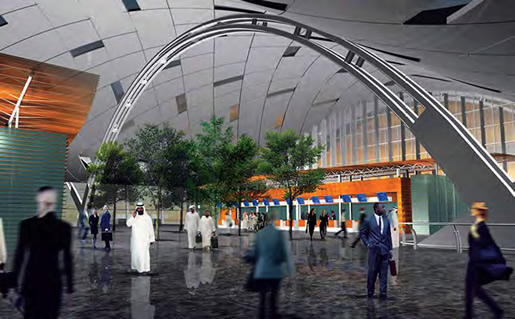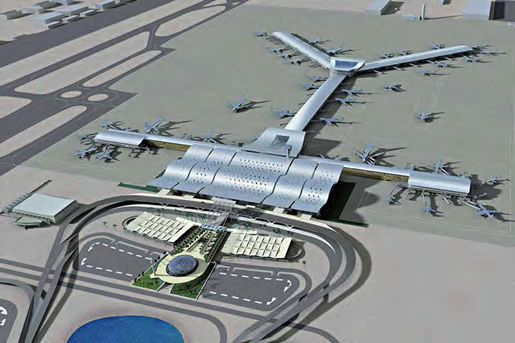But the terminal’s most striking feature is its undulating roof, said to be the largest stainless steel roof in the world. Several factors had to be taken into account when selecting the stainless steel grade. The most important of these was the airport’s closeness to the sea. The roof had to both resist the heat and humidity found everywhere in the Middle East, and withstand salt corrosion on top of these other problems. Other factors included cost and a favourable strength-to-weight ratio.
Another important consideration was that the roof should not reflect too much sunlight, which would not only cause discomfort on the ground but also distract pilots. Texture and appearance were therefore vital not only for aesthetic but also for practical reasons. To get these two factors right, Contrarian Metal Resources applied its proprietary InvariMatte® finish to the duplex stainless steel sheets. This non-directional, low-gloss, uniformly textured stainless steel finish is especially suited to surfaces where low reflectivity is required. The end result is extremely consistent, like paint. However, as there are no coatings to deteriorate, it can last much longer, without much maintenance.
Lean duplex stainless steel roof
Although this type of matte finish can be applied to stainless steel Types 304(L) and 316(L), it was a duplex stainless steel that was specified on this occasion. Contrarian Metal Resources turned to a local supplier of global renown, Pennsylvania-based ATI Allegheny Ludlum. The company’s AL 2003™ lean duplex stainless steel (1.8% Mo, 21.5% Cr, 0.17% N, 3.7% Ni) turned out to have exactly the right properties for the task in hand. The manufacturers have stated that this grade has a substantial strength advantage over Type 316L, allowing thickness reductions and therefore lighter weight; this translates into significant savings in raw material costs. Also, the corrosion resistance of this grade can be superior to 316L, even in the as-welded condition. Especially where weight-to-strength ratio and chloride pitting resistance are important, certain grades of duplex stainless steel can be more suitable than 316L. AL 2003™ has in fact replaced 316L in some applications: for example, the pipes supporting the canopy for a Washington DC metro station, flexible flowlines for the Kikeh oil and gas project offshore Malaysia, and laser-welded tubes for a geothermal condenser.1
AL 2003™ is the only lean duplex grade that contains moly in significant amounts. In this grade, moly is an indispensable ingredient in combating corrosion. This is vital in a region notorious for its hot, humid and saline atmosphere – especially as the airport site is virtually surrounded by sea.
1 John J. Dunn and David S. Bergstrom (ATI Allegheny Ludlum), “AL 2003™ LDSS (UNS S32003) as a substitute for Type 316L”, Stainless Steel World 2006 Conference, Texas, 14 November 2006.



